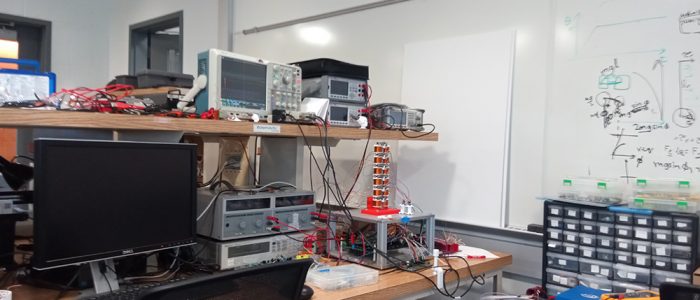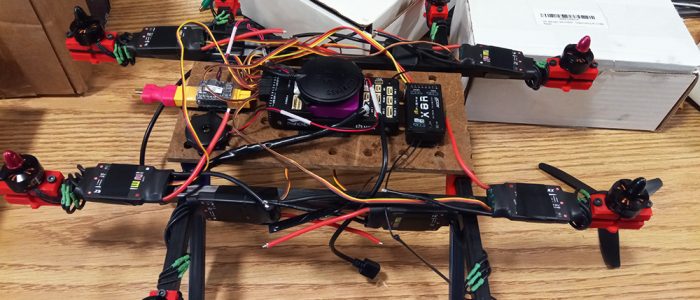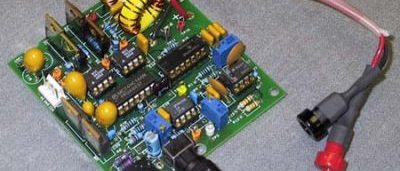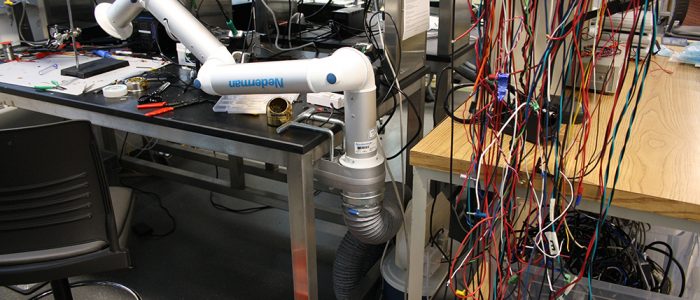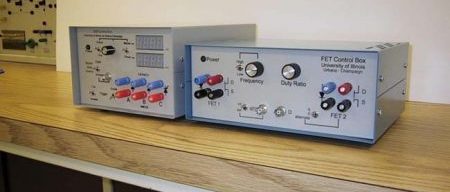The Power Area has assembled some of the nation’s finest facilities for experimental and computer-based research and teaching. Both undergraduate and graduate students can take advantage of these facilities.
LABORATORY FACILITIES
The Grainger Power Engineering Software Laboratory has relocated in rooms 4038 (workstations 1 – 5) & 4068 (workstations 1 – 5) ECEB [Electrical and Computer Engineering Building]. The Software Laboratory has nine advanced personal computers. All stations are connected to the campus network and Internet.
A major objective of the laboratory is to develop an extensive library of commercial software and large-scale databases for power area applications. Software is based on Windows 10. Some of the commercial software packages currently in use include:
- Mathematica / Wolfram (advanced symbolic mathematics, fully integrated technical computing)Mathcad / PTC (Industry standard for engineering calculations)
- MATLAB / MathWorks (MATrix LAB, technical computing)
- Simulink (Matlab package, graphical simulation, model based design, dynamic and embedded)
- SimElectronics (Simulink Toolbox, Model and simulate electronic and electromechanical systems)
- SimPowerSystems (Simulink Toolbox, Modeling and simulating electric power systems)
- xPC Target (Simulink, Rapid control prototyping and hardware-in-the-loop)
- PLECS (Simulink, fast simulation of electrical and power electronic circuits)
- acslX(treme) / AEgis (general-purpose simulation environment)
- LabVIEW (Visual programming language, lab bench dynamometer control program & gui)
- PSS/E / Siemens PTI ( Power System Simulator for Engineering, electrical transmission)
- RISKSYM / Henwood (package for energy market analysis)
- PowerWorld (Power systems analysis, power market analysis, locational marginal price analysis)
- Power System Tool Box (PST Version 2.0)
- ANSYS / Ansoft (FEA finite element analysis modeling)
- Maxwell (ANSYS, EM Field Simulation for High-Performance Electromechanical Design)
- RMxprt (ANSYS, Design Software for Electric Machines)
- Simplorer (ANSYS, simulation of electrical, electromechanical, electromagnetic, power, thermal)
- Flux / Magsoft (Electromagnetic and Thermal Physics Simulation)
- Eagle / CadSoft (Schematic capture and PCB design)
- SAM / NREL (System Advisor Model, PV Photovoltaic system cost estimation)
- Altera Quartus & DSP Builder (FPGA software & Digital Signal Processing tool)
- SPEED / STAR-CCM+ / CD-adapco / Siemens (design and analysis of electric machines)
The Grainger Electrical Machinery Laboratory is located in 4024 ECEB [Electrical and Computer Engineering Building]. This facility is primarily for undergraduate teaching and is used for ECE 431 (Electric Machinery), ECE 469 (Power Electronics), many ECE 445 (Senior Design) groups, and student groups and projects, including Engineering Open House (EOH), Future Energy Challenge (FEC), Solar Decathlon (Solar House), Wide Impact Developmental Engineering (WIDE), Society of Women Engineers (SWE), Formula Electric Car, and Fuel Cell Electric Car. With many power and energy teaching labs cutting back on hardware and machines, or going totally software and virtual because of fiscal restraints, the Grainger lab has been able to maintain and increase our large inventory of test machines and equipment. Ten self-contained machinery workstations are available. Each has an integral horsepower machine set with a servo-based dynamometer. The lab benches were updated with new equipment for the academic year (2013/2014) including new digital watt meters, new oscilloscopes, new signal generators, new power supplies, and speed / torque displays. The equipment is suitable for the study of induction, synchronous, and DC machines. Small portable machine sets are used to introduce stepper motors and brushless DC machines. Transformers, resistor boxes, capacitor boxes, SCR, and power FET units are provided to support a full range of experiments in all aspects of power and power electronics. The facility has a dedicated three-phase supply 120/208 Vac (150 kVA) and 240 Vdc (+/- 120 Vdc) 80 A rectifier.
The Power and Energy Systems group has Advanced Power Applications Labs in 4020 and 4026 ECEB. These research labs have motor test benches with precision dynamometers and a third new high-horsepower test bed. The benches can access 208 Vac 3-phase, 480 Vac 3-phase, and 240 Vdc. These labs serve as a research facility for all hardware aspects of power electronics, machines, and power systems. Additional equipment is available for the study of harmonic effects, high-performance switching converters, and digitally controlled converters/drives. Computers are available throughout the laboratory for automation of experiments using LabVIEW and Matlab/ Simulink/Real-Time Toolbox. This fourth-floor lab has direct access to the roof to allow for solar panel, wind turbine, and weather station placement.
The Power and Energy Computer Research Lab is located in 4076 ECEB [Electrical and Computer Engineering Building]. This laboratory uses the space as a controller hardware-in-the-loop (C-HIL) testbed. The C-HIL testbed is used to achieve: (1) high-fidelity modeling and real-time simulation of an electric power grid, (2) the synthesis of coordination and control algorithms on several controller hardware platforms, and (3) the testing and validation of the resulting coordination and control technologies. The electric power grid is modeled using the Typhoon HIL Platform, and the Arduino Due and National Instruments cRIO controller hardware platforms are employed in the testbed. The hardware that comprises this testbed includes:
A set of Arduino Due microcontrollers, each coupled with a W5100 Ethernet shield and XBee module
- One Typhoon HIL 402 unit
- Three Typhoon HIL 603 units
- A National Instruments cRIO 9068 with NI PS-15 power supply
- Two 24 Port Gigabit Switches
This comes with a set of software packages installed on two advanced personal computers as listed below:
- Arduino IDE Software
- Processing 3.3.7
- LabVIEW 2017
- Typhoon HIL testing software
- MATLAB R2017a
